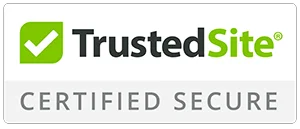Labor certifications are very important in the U.S., especially when it comes to obtaining employment-based green cards. Employers and employees need to understand the differences between PERM and other labor certifications.
This article breaks down these key differences. Ensuring you gain a thorough understanding of which certification fits your situation best. Focusing particularly on “what is PERM” and how it contrasts with other certification types.
We’ll walk you through the critical aspects of the PERM process. As well as its comparison with other labor certification methods that the U.S. Department of Labor (DOL) administers. From procedural requirements to timelines and documentation.
What is PERM Labor Certification?
PERM, or Program Electronic Review Management, is used by the U.S. Department of Labor (DOL). It is a standardized system for employers to obtain labor certification for hiring foreign workers. This certification is the first step in most employment-based green card processes. It aims to ensure that no qualified U.S. workers are available for the position being offered to a foreign worker.
The PERM process is required for EB-2 and EB-3 visa categories. Visa categories which apply to professionals and skilled workers. However, PERM is not required for EB-1 visas (exceptional ability and multinational managers). It is also not required for those seeking a National Interest Waiver (NIW).
One of the key benefits of PERM is its efficiency in determining labor market conditions electronically. Employers must demonstrate that hiring a foreign worker won’t negatively affect U.S. wages or employment.
Steps of the PERM Process
Now that we understand what PERM is let us discuss the PERM labor certification process.
- Step 1: Prevailing Wage Determination: Employers must request a prevailing wage determination (PWD). This request is to be made to the Department of Labor (DOL). This ensures the offered wage is appropriate for the position. The value is based on industry standards in that geographic location.
- Step 2: Recruitment Efforts: Employers are required to conduct thorough recruitment efforts. This can be achieved by posting job ads in multiple locations and interviewing U.S. applicants. This step demonstrates that no qualified U.S. workers are available for the role.
- Step 3: Filing ETA Form 9089: After the recruitment process, employers file the PERM application (ETA Form 9089) electronically with the DOL.
- Steps 4: Processing and Approval: The DOL processes the application and determines whether the recruitment was adequate and the wage offered is acceptable.
- Step 5: Potential Audits: Some applications may be audited by the DOL to ensure compliance with all recruitment and wage requirements.
In essence, recruitment must be done in good faith. This ensures that all job openings are available to U.S. workers before offering them to foreign employees.
Transition to PERM from Other Labor Certifications
Before PERM, labor certifications were handled through a more manual, supervised recruitment process. This process or system was known as Reduction in Recruitment (RIR). The shift to what is PERM as we know it in 2005 simplified this process. However, the core requirement remained: employers must prove no willing, qualified U.S. workers are available.
What is PERM streamlining? It is a process that was designed to reduce labor market tests and shorten approval times.
PERM’s Advertising and Wage Requirements
A significant part of understanding what is PERM, and its processes is analyzing the wages offered to foreign workers. It demonstrates that the wage offered to the foreign worker meets or exceeds the “prevailing wage” for that job. The DOL calculates this based on regional and occupational data. The prevailing wage ensures foreign workers are not undercutting U.S. wages.
Employers must also engage in specific recruitment activities. These include placing job ads in Sunday newspapers and other job-search venues. Failing to follow these regulations can lead to a PERM denial.
Benefits of PERM for Employers and Employees
When answering the question of “What is PERM?” we naturally will evaluate its benefits. For employers, PERM provides a more standardized, predictable approach to sponsoring foreign workers. For employees, successfully obtaining PERM certification is a critical step toward obtaining permanent residency in the U.S.
Other Labor Certifications
PERM is the most widely used labor certification process in the U.S. However, other labor certifications exist for specific categories of foreign workers. These include:
- Schedule A Labor Certification: For certain pre-certified occupations, such as nurses and physical therapists.
- National Interest Waiver (NIW): For individuals whose work benefits the U.S., particularly in science, education, or national security.
- Special Handling Labor Certifications: These are used by academic professionals like university teachers.
Each of these labor certifications has unique requirements and procedures. Their processes are often less rigorous than PERM. However, they apply to a narrower set of workers.
Schedule A Labor Certification vs. PERM
There is one significant distinction between PERM and Schedule A labor certification. Schedule A covers occupations where the DOL has pre-determined that there are shortages in the U.S. labor market.
This list includes nurses and physical therapists. Employers do not have to go through the extensive recruitment process required in PERM. Instead, they can directly file Form I-140 with USCIS. Schedule A is faster than PERM but only applies to specific occupations.
Requirements for Schedule A Certification
Employers using Schedule A certification must still submit Form I-140 to USCIS. This form is to be submitted along with evidence that the job falls under the Schedule A category. Unlike PERM, employers do not need to obtain a prevailing wage determination. Employers also do not need to conduct recruitment efforts before submitting their applications.
Which Jobs Qualify Under Schedule A?
The most common occupations under Schedule A are typically in the medical field. They include registered nurses, physical therapists, and foreign nationals with extraordinary abilities. Employers hiring workers in these fields can enjoy certain benefits. These perks include a much faster route to obtaining labor certification and, subsequently, a green card.
Speed and Efficiency of Schedule A
Schedule A labor certifications tend to be processed much faster than PERM. This is because there is no recruitment process involved. This makes Schedule A, an attractive option for employers in urgent need of foreign talent.
The Importance of Legal Guidance
Schedule A labor certifications may be simpler. However, they still require employers to meet specific legal and regulatory standards. Consulting with an immigration attorney in Queens is advisable to ensure compliance with all federal regulations.
National Interest Waiver (NIW) vs. PERM
The NIW is another key alternative to PERM. Recalling the definition of what is PERM. We know that it is essentially a labor certification process required of employers of permanent foreign labor. The NIW on the other hand, waives the labor certification requirement. It applies to individuals whose work is in the national interest of the U.S. This option is commonly used for individuals in STEM fields. It is also used for those who can demonstrate significant contributions to the country.
Unlike PERM, NIW applicants do not need an employer to sponsor them. They can self-petition, and there is no recruitment requirement. However, proving national interest can be challenging. Therefore, legal advice from a knowledgeable Queens immigration attorney is recommended.
How to Qualify for NIW
To qualify for NIW, the foreign worker must demonstrate that their work has substantial merit. The work done should also be of national importance. In a nutshell, they must show that waiving the labor certification requirement is in the country’s best interest.
Application Process for NIW
Applicants seeking NIW must submit extensive evidence. This evidence must prove their qualifications and the national importance of their work. While NIW allows workers to bypass labor certification, it requires a rigorous review by USCIS.
Who Benefits from NIW?
Scientists, researchers, and individuals working in fields that contribute to public health. Individuals in the education or national security sector are often the best candidates for NIW. Unlike PERM, NIW does not require a job offer, allowing individuals to self-petition for their green card.
Role of Attorneys in NIW Applications
NIW applicants may not need an employer to sponsor them. However, legal representation can be beneficial in compiling the necessary documentation and evidence.
EB-2 and EB-3 Labor Certifications
EB-2 visas are for professionals with advanced degrees or exceptional abilities. EB-3 visas are for skilled workers and professionals. Both visa types require labor certifications through the PERM process. The difference lies primarily in the job qualifications and the level of education or experience required.
The key distinction is that EB-2 requires a higher standard of education or skill than EB-3. For instance, EB-2 positions typically require a master’s degree or higher. While EB-3 positions can be filled by individuals with bachelor’s degrees or less.
Comparing Processing Times and Procedures
PERM processing times vary significantly depending on whether an audit is required. In comparison, Schedule A and NIW certifications tend to move more quickly. This is because they bypass the labor market testing required in PERM. Audits in the PERM process can delay certification by months or even years. However, Schedule A and NIW certifications often face fewer delays.
PERM Audits and Denials
Wondering what is PERM in terms of its audit process and how it affects your application? Let’s break it down. The DOL may audit a PERM application to verify the accuracy of the recruitment efforts. This is to ensure that the job requirements weren’t designed to exclude U.S. workers. Common reasons for audits include:
- Inconsistent or incomplete documentation.
- Suspicious job requirements that seem tailored to the foreign worker.
- Insufficient advertising efforts.
To avoid audits, employers should ensure they adhere strictly to the DOL’s recruitment guidelines.
What to Do in Case of a PERM Denial
If a PERM application is denied, employers can appeal the decision. This process can be stressful and time-consuming. However, it is often successful if the denial is due to procedural errors rather than substantive issues.
Responding to PERM Audits
If an employer receives a PERM audit notification, they must respond promptly and comprehensively. The DOL typically requests additional information about recruitment efforts. This will include advertisements, job postings, and applicant responses.
Audit responses must be carefully crafted to address the DOL’s concerns. Failure to comply can lead to denial or delays.
Avoiding PERM Denials Through Proper Preparation
The best way to avoid a PERM denial is to prepare thoroughly. Employers should ensure that job descriptions and recruitment efforts align with DOL guidelines. They must document every step of the recruitment process and be transparent about their hiring needs.
Seek Professional Help to Navigate PERM and Labor Certification
Understanding what PERM and other labor certifications are can be challenging. However, it is crucial for employers seeking to sponsor foreign workers to understand the differences between these certifications. Given the complexities involved, hiring a Queens Immigration Attorney to guide you through the process is highly recommended.
When filing a PERM application or exploring alternative certifications, professional legal assistance can make all the difference. Strong legal guidance can help you obtain employment-based green cards for foreign workers. For more information and a consultation, reach out to a Queens Immigration Attorney today!





